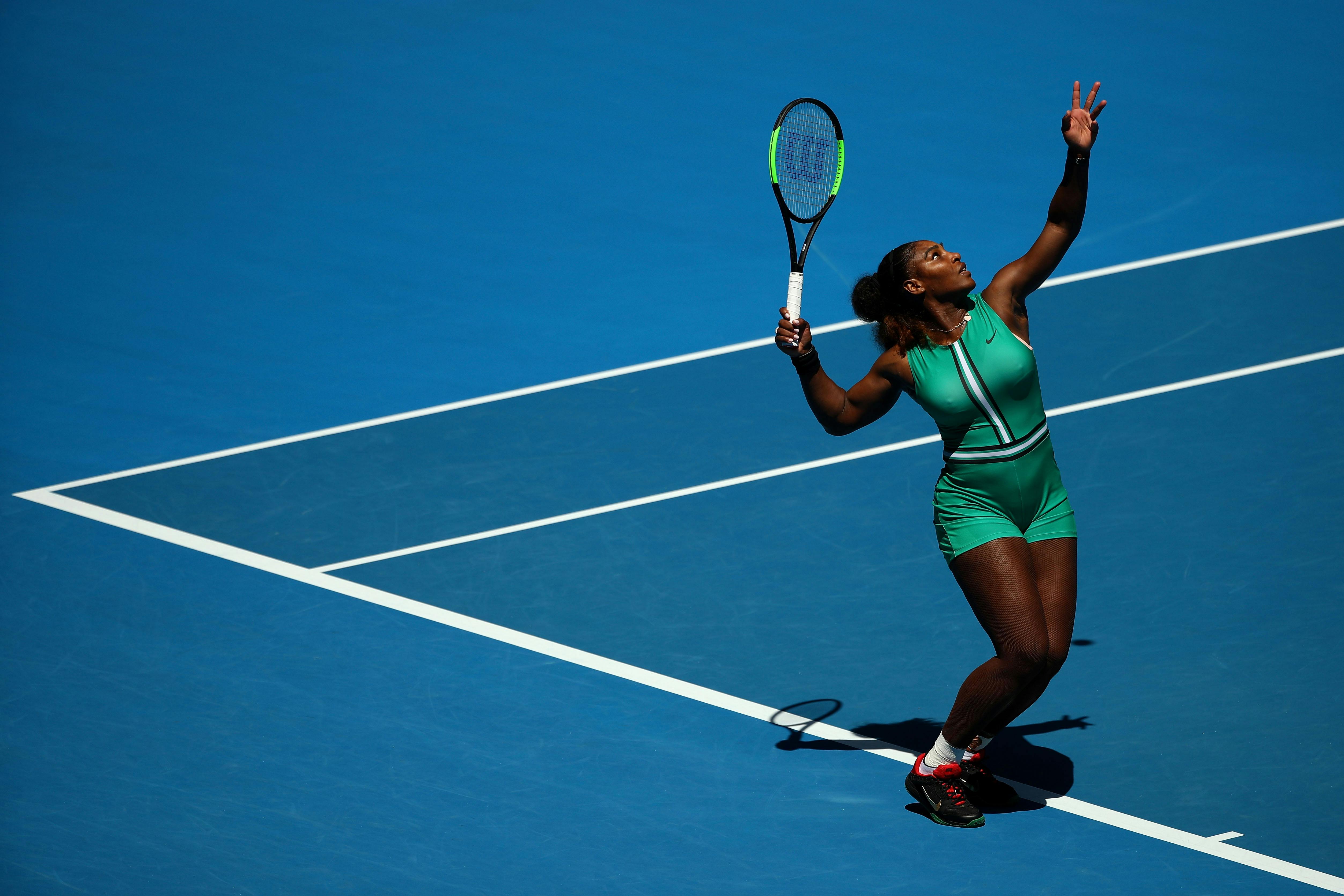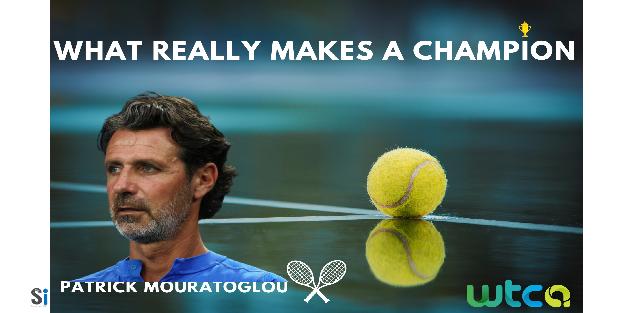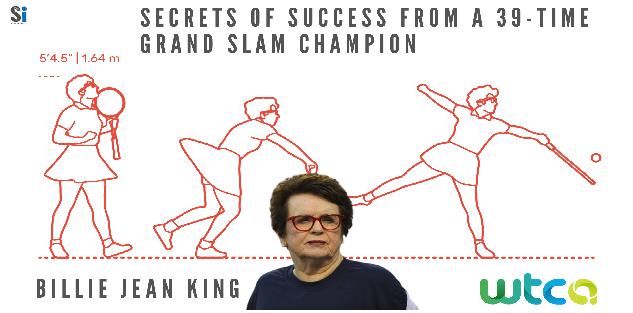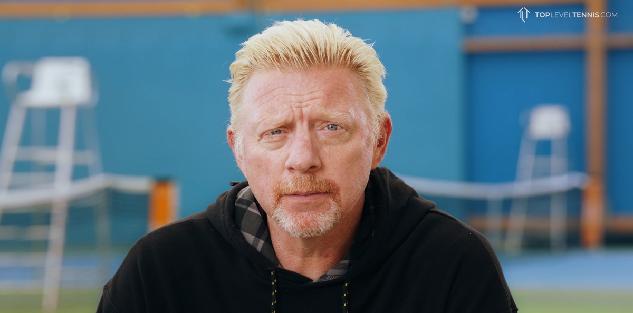Featured courses
- Four Tips to Turn Your Tennis Forehand Into a Weapon by Grant Young
- Tennis Legend Billie Jean King’s 4 Responsibilities as a Player by Grant Young
- Two Top Priorities For Success in Doubles Tennis by Grant Young
- Three of Tennis Whiz Lisa Dodson’s Tips to Improve Serves by Grant Young
- Three Elite Tennis Ball Machine Drills by Grant Young
- Three Keys For Correcting Tennis Serving Mechanics by Grant Young
- Five Tactical Tips to Win More Tennis Matches by Grant Young
- 4 Lessons Patrick Mouratoglou Learned From Coaching Serena Williams by Grant Young
- Four Effective Backhand Tennis Drills by Grant Young
- Two of Legendary Tennis Coach Paul Annacone’s Crucial Player Development Tips by Grant Young
- A Step-By-Step Guide To Mastering The Serve by Krsto Arsenijevic
- How to Dominate the Clay Court in Tennis by Krsto Arsenijevic
- 10 Essential Tennis Drills Every Coach Should Know by Brandon Ogle
- 8 Pre-Game Exercises to Prime Your Tennis Team for Competition by Neil Brown
- 7 Proven Tips To Develop Your Net Game in Tennis by Krsto Arsenijevic
- 10 Essential Tennis Drills Every Coach Should Know by Krsto Arsenijevic
- Developing Players - Two-handed backhand by Ramon Osa
- 6 Simple Warm-up Exercises For Tennis Players by Krsto Arsenijevic
- How to Beat a Serve-and-Volley Player by Krsto Arsenijevic
- How To Build Your Kinetic Chain Like Djokovic by Aiden Lefebvre
- How to neutralize a lefty in Tennis by Aiden Lefebvre
- 5 Tips To Improve Your Tennis Game Today by Krsto Arsenijevic
- Everything You Need to Know Before Buying New Tennis Shoes by Brandon Ogle
- Amp up your tennis practice with situational play by Neil Brown
- Tennis Equipment List by Brandon Ogle
- How to Master The One-handed Backhand in Tennis by Krsto Arsenijevic
- Modern High School Tennis Coaching Obstacles by Neil Brown
- Increase Your Tennis Fitness Level With 3 Easy Drills by Krsto Arsenijevic
- How to Successfully Hit a Two-Handed Backhand by Brandon Ogle
- How to Become a Grass Court Specialist in Tennis by Brandon Ogle
- How to Dominate the Hard-Court like Serena Williams by Brandon Ogle
- Hit a Drop Shot to Keep Your Opponent Off-Balance by Brandon Ogle
- New Tennis Injury Findings Linked to Neutral & Closed Stances by Oscar Wegner
- CHATTING WITH TENNIS PRO BRUCE CONNORS by Brandon
- How to Become a Mentally Strong Tennis Player by Brandon Ogle
- How to Win the Game of Angles by Hitting Cross-Court Shots by Eric Mahnke

Three of Tennis Whiz Lisa Dodson’s Tips to Improve Serves
- By Grant Young
The journey from having a good tennis serve to achieving greatness often hinges on the subtle nuances introduced by effective coaching.
While many players may possess the raw talent and basic mechanics necessary for a solid serve, it is the refined details, often highlighted by a knowledgeable coach, that can truly transform performance.
Coaches can offer insights that transcend mere technique, helping players develop a deeper understanding of their own bodies and how they move during a serve. This understanding fosters a greater sense of confidence, encouraging players to trust their instincts and abilities under pressure.
Additionally, the relationship between a coach and player allows for personalized adjustments, as coaches observe and identify specific areas for improvement. This tailored approach not only enhances a player’s technical skill but also builds a foundation of mental resilience.
Coaches often emphasize the importance of consistency, focus, and strategic thinking, encouraging players to visualize success and embrace a winning mindset. Moreover, a coach’s experience can illuminate the importance of practice—underlining how even the smallest changes can lead to significant improvements.
Through consistent guidance, players learn to embrace the process rather than solely focusing on the outcomes, fostering a mindset for growth.
Ultimately, the small, subtle interventions of a coach can bridge the gap between potential and performance. Their ability to instill confidence, promote understanding, and encourage adaptability allows players to elevate their serves, resulting in a game that isn’t just good, but truly great. In tennis, as in many sports, it’s often the fine details that make all the difference.
This is why tennis coaches must have the right information when it comes to teaching their players how to serve correctly. This is where Lisa Dodson comes in.
Coach Dodson is a certified USPTA Elite Professional with 45+ years of tennis teaching experience. She’s also a former WTA world-ranked player in singles and doubles with broad experience in multiple sports at high levels.
Dodson is the inventor of ServeMaster, an accelerated learning tool that allows tennis players to feel what the serve should feel like without hitting a tennis ball. It can be used anywhere and is easily portable. It is also a multi-sport tool that helps players improve their technique both on and off the courts or playing field.
Coach Dodson’s ‘Serve in 30!’ clinic conveys several valuable tips on how to improve a tennis player’s serve. We’ve pulled three tips and included them for your use below.
Get a Grip on the Serve
The first lesson that Coach Dodson conveys in her clinic is how to properly grip the tennis racket during the serve.
She notes how there’s a left-side bevel and a right-side bevel on the tennis racket’s handle. A right-handed player will want to put their hand a little bit below halfway down the racket, and the right thumb on the left side level and the right index finger on the right-side bevel.
This will create a sort of checkmark between the thumb and index finger, which is ideal for gripping the racket during a serve. It’s important to note that the hand should be left of center on the racket, and not held horizontally, as this will take away from flexibility and strength when executing the serve.
Another important point is that the pinky finger is going to be right above the flared end of the racket. The grip should also be loose and low.
Toss it UP!
Coach Dodson asserts that there are four important things to remember when it comes to the toss.
1. Players want to keep a very light grip on the ball with flat fingers. They should be placed across the first joints of your fingers.
2. They want to keep their wrist pointed downwards.
3. They want to keep a straight elbow throughout the toss.
4. The toss should come completely from the shoulder.
Once these are all nailed down, the player should ensure that their toss is going straight up and down with no spin with no arc, so that it’s sitting there, waiting for the player to hit it at its highest point.
One potentially difficult aspect of the serve is that while the serving arm is going to be rigid, the racket arm should remain as loose and floppy as can be.
A great drill that Coach Dodson recommends is to place a racket’s end right at the edge of where a front foot will be positioned during the serve. Then the ball will be tossed in the air, and if it comes down on the racket head, that’s the perfect height and length for your serve.
Set Your Feet For Power & Rotation

For the platform stance, Coach Dodson suggests a player place their feet a little closer than shoulder width. The left toe goes in the direction of the right net post while the left foot is essentially parallel to the baseline (although this is flipped for left-handed hitters).
From there, a player can get an idea of where their serve will likely be headed by placing their racket down in a straight line with the tips of their shoes. Whatever this line is pointed to is likely where your serve will end up.
Despite this, Coach Dodson asserts that the stance is very personal, and no two players stand the exact same way. That’s why players need to experiment with different stances and see what feels most comfortable. But this is a good baseline from which to experiment.



